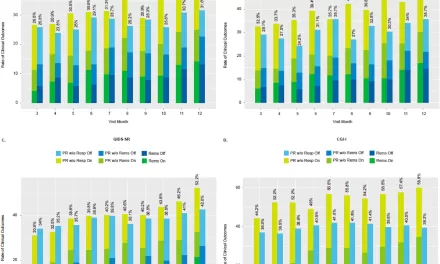When individuals suffer from two or more long-term health conditions simultaneously, it is known as multimorbidity. The World Health Organization warns that multimorbidity not only complicates primary healthcare but also increases patient vulnerability and healthcare costs.
People with multiple conditions face a heightened risk of early mortality, reduced quality of life, and the challenge of managing multiple medications. This polypharmacy raises concerns over drug interactions and adherence to treatment regimens.
The African Context
In African countries, multimorbidity presents unique challenges. Many individuals suffer from both non-communicable diseases such as hypertension and diabetes and infectious diseases like HIV and tuberculosis. Socioeconomic disparities and limited healthcare access exacerbate the issue.
Despite the severity of multimorbidity in Africa, research on this subject has predominantly focused on populations of European ancestry. Studies that include people of African descent often center on African-Americans, whose health concerns differ significantly from those on the African continent.
Identifying Research Gaps
A study analyzing 232 medical research publications from 2010 to mid-2022 found that only 113 focused on African populations, while 100 examined the African diaspora. Merely 19 studies included both groups.
The analysis, which covered five major academic databases, was limited by language constraints and institutional access. This suggests that a vast array of multimorbidity research remains unexplored, particularly regarding African populations.
Disease Patterns and Disparities
Cardiometabolic diseases, such as hypertension, heart disease, and diabetes, were the most frequently studied conditions among both African and diaspora populations. However, significant differences were noted:
- In Africa, these conditions often coexisted with infectious diseases like HIV and tuberculosis.
- In the diaspora, multimorbidity was more commonly linked to other non-communicable diseases and mental health conditions such as depression and PTSD.
Demographic and Socioeconomic Influences
As expected, older individuals were the most affected by multimorbidity. However, due to Africa’s high burden of infectious diseases, younger adults were also significantly impacted.
Women were more likely to have multiple conditions, particularly hypertension and diabetes. Biological factors like hormonal differences and social determinants such as income disparity and occupational environments may contribute to this trend. Those from lower socioeconomic backgrounds—often women—are more vulnerable to unhealthy lifestyles and have reduced access to preventive healthcare.
The Need for Inclusive Research and Integrated Care
The study underscores the necessity for more inclusive medical research. Expanding research participation to include diverse African populations can provide a more accurate picture of multimorbidity. Collecting genetic and metabolomic data will also be crucial in understanding disease patterns.
Integrated healthcare is another key solution. Countries like South Africa and Kenya have successfully introduced integrated care models where patients receive treatment for multiple conditions at the same facility in a single visit. Scaling up such initiatives could significantly improve health outcomes for African populations.
Conclusion
Multimorbidity remains a pressing but under-researched issue in Africa. Addressing this gap requires a concerted effort from the global medical community, policymakers, and researchers to ensure better healthcare solutions for African populations.
Disclaimer: This article is based on research findings and does not constitute medical advice. Readers are encouraged to consult healthcare professionals for personalized medical guidance.











